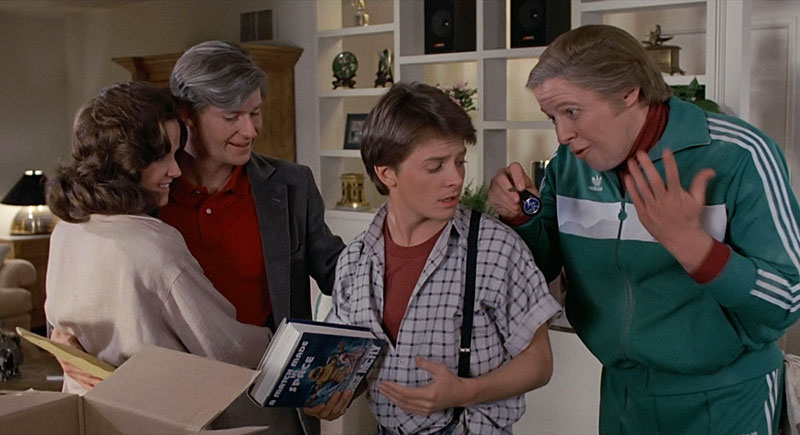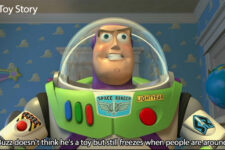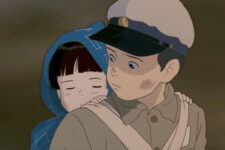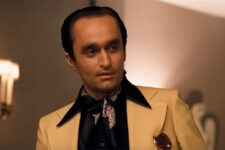
Movies have the power to transport us to different worlds, introduce us to extraordinary characters, and immerse us in captivating narratives. However, even the most meticulously crafted films can sometimes leave us scratching our heads over plot inconsistencies.
These plot holes, ranging from minor oversights to glaring narrative gaps, can spark debates among movie buffs and casual viewers alike. In this article, we’ll dive into some of the most notable plot holes in cinematic history, exploring how even the brightest gems of the silver screen aren’t immune to a few narrative cracks. Whether they made us question a character’s decision, the laws of physics, or the very fabric of the film’s universe, these plot holes have left an indelible mark on our cinematic experiences.
The Dark Knight Rises
The Dark Knight Rises is the final installment in Christopher Nolan’s Batman trilogy. While the film is generally well-regarded, it does contain a significant plot hole involving the character Bruce Wayne/Batman, played by Christian Bale.
In the film, Batman is captured by the villain Bane and imprisoned in a remote, underground prison known as the Pit. After several months, Batman manages to escape the Pit and needs to return to Gotham City, which is under siege and completely isolated from the rest of the world by Bane.
The plot hole arises here: the film does not explain how Bruce, without any resources or contacts, manages to travel from the Pit (which is in an undisclosed location, possibly in a different country) back to Gotham City. Furthermore, Gotham is under strict lockdown, with all entry and exit points heavily guarded to prevent anyone from coming in or going out. Yet, Bruce not only manages to enter the city but also reappears as Batman, fully equipped with his gear.
While one could argue that Bruce Wayne, with his training and resourcefulness, could find a way back to Gotham, the lack of any explanation leaves a significant gap in the plot.
Star Wars: Episode IV – A New Hope
“Star Wars: Episode IV – A New Hope” (1977) is the first installment of the iconic Star Wars franchise. However, even this beloved film isn’t immune to plot holes. One of the most notable ones involves the escape pod carrying the droids R2-D2 and C-3PO at the beginning of the movie.
In the film, Princess Leia entrusts the Death Star plans to R2-D2, who along with C-3PO, escapes from Leia’s captured ship in an escape pod. The pod is detected by the Empire’s Star Destroyer, but they decide not to destroy it because there are no life forms aboard.
The plot hole is this: Why didn’t the Empire shoot down the escape pod just to be safe? The Star Destroyer had just captured a Rebel ship, and it would be reasonable to assume that the Rebels might try to send out any valuable information or items in an escape pod, regardless of whether there were life forms aboard or not. The decision not to destroy the pod seems to be a significant oversight, especially considering that the Empire was at war with the Rebel Alliance and should have been on high alert for any potential threats or escape attempts.
The Empire could have easily stopped the entire Star Wars saga from happening if they had shot down the escape pod.
Cinderella
The classic Disney animated film “Cinderella” (1950) is beloved by many, but it does contain a notable plot hole that revolves around the magical transformation Cinderella undergoes with the help of her Fairy Godmother.
In the film, the Fairy Godmother gives Cinderella a beautiful gown and glass slippers so she can attend the royal ball. However, she warns Cinderella that the magic will wear off at midnight, and indeed, when the clock strikes twelve, everything returns to its original form. Everything, that is, except for the glass slippers, one of which is left behind as Cinderella flees the palace and is later used by the prince to find her.
The plot hole is this: Why didn’t the glass slipper transform back into its original form like everything else did? If the magic was supposed to end at midnight, the slipper should have turned back into the old shoe Cinderella was wearing before the transformation.
Back to the Future
In “Back to the Future”, Marty McFly, played by Michael J. Fox, travels back in time from 1985 to 1955. During his time in the past, he interacts extensively with his teenage parents, George and Lorraine, even going so far as to introduce them to each other and ensure they fall in love, thereby securing his own existence.
The plot hole arises when Marty returns to 1985 and interacts with his parents. Despite the significant role he played in their past, George and Lorraine do not recognize their son as the young man who helped them get together in high school. This is particularly puzzling considering that Marty used his own name while in the past, and his appearance, voice, and mannerisms have not changed.
One could argue that George and Lorraine simply do not remember Marty from their past. After all, 30 years have passed, and they only knew him for a week. However, considering the pivotal role he played in their relationship, it seems unlikely that they would forget him entirely.
Another explanation could be that George and Lorraine do remember Marty from their past but do not connect him with their son. They might think that their son merely bears a striking resemblance to the young man they knew in high school. However, this explanation also seems unlikely given the exact match in appearance and name.
Jurassic Park
In Steven Spielberg’s “Jurassic Park”, one of the most thrilling and iconic scenes is the T-Rex attack. However, it also contains a significant plot hole that has puzzled viewers for years.
The scene begins with the T-Rex breaking out of its enclosure during a storm, stepping over the fence, and onto the road where the tour vehicles are parked. The T-Rex’s paddock appears to be at the same level as the road, allowing the dinosaur to walk straight onto it.
However, later in the scene, the T-Rex pushes a car (with a terrified child inside) over the edge of the very same enclosure, revealing a massive drop that wasn’t there before. This sudden cliff seems to appear out of nowhere, leading to a significant plot hole. If there was such a steep drop, how did the T-Rex manage to step onto the road in the first place?
Some fans have tried to explain this discrepancy by suggesting that the T-Rex’s paddock is not entirely flat and that there could be a part of the enclosure that is level with the road and another part that drops off into a deep pit. However, the film does not provide a clear explanation, leaving this as one of the most debated plot holes in movie history.
The Matrix
“The Matrix” is a groundbreaking science fiction film that explores a dystopian future in which humanity is unknowingly trapped inside a simulated reality, the Matrix, created by intelligent machines to distract humans while their bodies are used as an energy source.
A significant plot hole in the film involves the character Cipher, played by Joe Pantoliano. Cipher is a member of the human resistance who betrays his crewmates and makes a deal with the agents of the Matrix to be reinserted into the simulated reality.
The plot hole arises during the scene where Cipher is seen inside the Matrix, having a conversation with Agent Smith. The problem is, entering the Matrix requires a team effort. Someone needs to stay behind in the real world to operate the equipment and guide the person in the Matrix, as well as pull them out when it’s time to leave.
However, Cipher appears to enter the Matrix, have a conversation with Agent Smith, and then return to the real world, all without anyone noticing or assisting him. The film does not provide an explanation for how Cipher manages to do this, leaving a plot hole that has puzzled many fans.
Harry Potter and the Goblet of Fire
In “Harry Potter and the Goblet of Fire”, the fourth installment of the Harry Potter series, a significant plot hole revolves around the elaborate plan devised by Barty Crouch Jr., who is disguised as Alastor Moody, to transport Harry Potter to Lord Voldemort.
The plan involves manipulating the events of the Triwizard Tournament so that Harry is the one to touch the Triwizard Cup, which has been turned into a Portkey, at the end of the final task. This transports Harry to a remote graveyard where Voldemort is waiting to kill him.
However, this plan raises a significant question: Why go through such a complex and risky plan when Harry could have been sent to Voldemort much earlier and more easily? Barty Crouch Jr., as Moody, had numerous opportunities to give Harry a Portkey throughout the year. This would have achieved the same result without the need for the elaborate and dangerous Triwizard Tournament plan.
One possible explanation is that Voldemort wanted Harry’s death to appear as an accident during the dangerous Triwizard Tournament, rather than raising suspicion by having him disappear during the school year. However, this is never explicitly stated in the film, leaving a plot hole that has puzzled many Harry Potter fans.
Terminator 2: Judgment Day
In “Terminator 2: Judgment Day”, the second installment of the Terminator series, a significant plot hole revolves around the strategy employed by Skynet, the sentient artificial intelligence system, to eliminate John Connor, the leader of the human resistance.
In the film, Skynet sends a single advanced T-1000 Terminator back in time to kill John Connor as a child. At the same time, the human resistance sends back a reprogrammed T-800 Terminator to protect him. This leads to a thrilling and deadly cat-and-mouse chase that forms the crux of the movie.
However, this strategy raises a significant question: If Skynet has the ability to send multiple Terminators back in time, why not send them all at once to ensure John Connor’s elimination? Sending a single Terminator seems like a risky strategy, especially considering the high stakes involved.
One possible explanation is that the time travel technology used by Skynet only allows for one Terminator to be sent back at a time. However, this is never explicitly stated in the film, leaving a plot hole that has puzzled many Terminator fans.
Toy Story
In Pixar’s beloved animated film “Toy Story”, there’s a plot hole involving the character Buzz Lightyear that has left many fans scratching their heads.
When we’re first introduced to Buzz Lightyear, he genuinely believes he’s a real space ranger, not a toy. He doesn’t realize that he’s a piece of merchandise from a popular children’s show, despite the other toys telling him so. This belief is a significant part of Buzz’s character arc in the film, as he eventually comes to terms with his identity as a toy.
However, this leads to a puzzling inconsistency. If Buzz truly believes that he’s a real space ranger, why does he freeze and act lifeless when humans are present, just like the other toys do? If he doesn’t think he’s a toy, there should be no reason for him to behave like one when people are around.
One possible explanation is that freezing is an involuntary reaction that all toys have when humans are present, regardless of whether they believe they’re toys or not.
Signs
M. Night Shyamalan’s “Signs” is a suspenseful thriller about a family living in a rural area who start to discover mysterious crop circles in their fields, signaling an impending alien invasion. The plot hole in this film revolves around the aliens’ vulnerability.
Towards the end of the movie, it’s revealed that the aliens are severely harmed by water. The discovery is made when the character of Bo (Abigail Breslin) leaves half-drunk glasses of water around the house, and one of the aliens is later injured by the water.
The plot hole here is twofold:
-
Why would water-harming aliens invade a planet that is approximately 71% water? Earth’s surface is mostly covered by oceans, seas, and other bodies of water. Rain, snow, and other forms of precipitation are common in many parts of the world. It seems highly illogical and risky for beings harmed by water to choose Earth as their target for invasion.
-
Why didn’t the aliens wear protective suits? If the aliens have the technology for interstellar travel, it stands to reason they would also have the means to protect themselves from harmful substances. If water is indeed harmful to them, why wouldn’t they wear suits or some form of protection to shield themselves?








